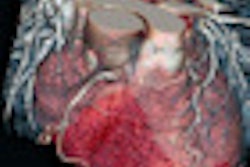How beneficial is a treatment if a cancer is cured but the patient's health is compromised in the process? This dilemma is one that pediatric oncologists know well. When the patient is a child and the treatment is radiation, balancing the risk and impact of side effects against the odds of treatment success is important.
Since 2004, radiation oncologists in Germany have been submitting detailed information about all radiotherapy treatments performed for every patient younger than age 19 to the Registry for the Evaluation of Late Side Effects After Radiation in Childhood and Adolescence (RiSK) study trial center database maintained at the University Hospital of Münster. An analysis of acute toxicities obtained from this database of more than 1,000 pediatric cancer patients has been published online in Radiotherapy & Oncology (May 31, 2010), providing an overview of the pattern of acute toxicities of irradiated organs.
The registry was established in June 2001 by the German Group of Paediatric Radiation Oncology. Initially, only several cancer centers participating in clinical trials of the German Society of Paediatric Oncology and Haematology submitted data, but within three years all radiation oncology departments in Germany were contributing information. Currently, documentation forms are available in both German and English, and international participation is welcomed.
As of May 2009, the RiSK database contained data on about 1,086 children. Information about acute toxicity was documented for 69% of the patients.
About half of the total number of patients, 506 children, experienced acute toxicity. Principal investigators Tobias Bölling, MD, and Nadja Selo, MD, of the radiotherapy department at the University Hospital of Münster evaluated reported toxicities from irradiation to the lung, liver, salivary glands, lower gastrointestinal tract, and genitourinary system.
The analysis is summarized as follows:
|
With an increasing volume of irradiation to both the liver and lungs, the acute toxicity also increased significantly, the authors noted. They emphasized that this was true even with low irradiation doses of less than 20 Gy, noting that this was an important finding because acute liver failure in children has been caused by irradiation damage. While radiation doses less than 20 Gy to major parts of the liver or higher doses to smaller parts seem to be safe, the RiSK data indicated a potential influence of liver volume irradiated with this lower dose level.
Overall, the side effects experienced by most patients were mild, the authors wrote. Symptoms dissipated several weeks and months after treatment for the majority of patients. Whether concurrent chemotherapy contributed to acute toxicities is unknown, because the size of the database precluded such analyses.
Radiation oncologists interested in contributing patient data to RiSK may obtain the English language form here.
By Cynthia E. Keen
AuntMinnie.com staff writer
July 15, 2010
Copyright © 2010 AuntMinnie.com

















